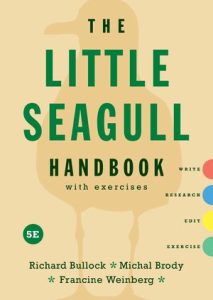About Dr. Evans…
I began working in higher education in prison in January 2019 after writing my master’s thesis on rehumanizing, liberatory education in prison through writing. I taught several courses in a four-year degree program in NC prisons: Composition 1 and 2, Advanced Writing, Cross-Cultural Communication, and History of Ideas. I currently teach English 101 and Introduction to College Reading and Writing for the Prison Education Program at Adams State University (hence this textbook).
The time I spent with my co-learners inside reframed how I thought and felt about education and human evolution. Prison, and our current “criminal justice” system, is not just. But I don’t have to tell you that; you live it daily.
I was invited into my co-learner’s community as we engaged in exploration and critical interrogation. Stepping into spaces where harm occurs daily requires empathy, genuine kindness, and love. Without these aspects, you perpetuate the harm, whether intentionally or not.
I wholeheartedly agree with the original author’s writing philosophy that writing is, or at least should be, an intellectual exercise. I often tell my co-learners that writing is heuristic. That is, when we write, we learn. When we read critically, engage other people, and write about it, we learn. Said another way, when we write, we are teaching ourselves.
I invite you on this journey to learn more about yourself and the world through your writing. There are no rules; in fact, grammar is completely made up by the societal norms created by the privileged. That doesn’t mean we don’t have certain responsibilities when writing in a specific genre. But I hope it liberates your preconceived ideas or fears about writing. Grammarians write rules and style books for a reason: for us to use, not memorize!
Everything I’ve learned about teaching and learning inside prison has come from my co-learners. This is the ultimate responsibility in cultural contextualization. We must enter spaces only after invitation, with humility and a willingness to learn. I hope the things I’ve learned from teaching inside help you experience joy when you write. It’s not always fun; some writing is downright tedious. You will inevitably write some crap at some point, and at others, you will create beauty. Stay vulnerable and show yourself grace.
There is no one way to write academically. How you hone your craft is as unique as you are! Embrace what works for you and set the other things aside. As Patricia Lynne contends, “Writing is about choices. When we write, we are usually trying to communicate something to someone, even if we are only communicating with ourselves.” People can’t read our minds, so we must choose how we communicate our ideas so others can understand the message.
Writing as a creative process doesn’t have inherent rules, but when we write in a specific genre, we should respect the constructions. Academic writing has specific constructions like poetry, fiction, or a legal document. That is not to say academic writing can’t be creative. It is through the choices we make we are allowed to exercise that creativity. Hopefully, this text provides you with enough background, practice, and insight to begin formulating your own database of writing choices.
The book is organized into seven sections that are designed to build off each other.
- Successful College Reading provides a guide for reading actively, choosing where and when to read, how to annotate texts, and how to find the main points. (We will focus on non-fiction only in this course).
- Writing as Intellectual Work helps you think about writing assignments as more than just turning in a required assignment. Using a learning model called “Bloom’s Taxonomy,” this section helps you figure out what the professor is looking for when they give you a writing assignment.
- Writing Process in College offers several techniques for managing the writing process. Some sections will focus on word processing. However, since many students will not have access to a computer, please know you can still become familiar with these techniques and apply them with pen and paper.
- Writing with Sources focuses on how to find credible sources and use them well in academic writing. Here you’ll find guides for evaluating your sources and information about summarizing, paraphrasing, quoting, and citing.
- Revision Specifics and Practice provides a more in-depth discussion on specific revision practices that will prepare you for English 101. The content was created Dr. Sandi Van Lieu and Dr. Karen Palmer from their grammar text, The RoughWriters Guide. Dr. Van Lieu and Dr. Palmer’s no-nonsense approach to revision and editing is commendable, especially in a world of seemingly never-ending grammar rulebooks. Like the rest of your text, I’ve contextualized when necessary.
- Editing Specifics and Practice wraps up our text with the most common “rules” and exercises for you to practice. You will certainly encounter more complex editing and revision needs as you progress through your courses. But these last two chapters will set you up for success as you prepare for English 101. If you are overzealous and would like to get a jump start with a more robust Grammar and Revision text, I highly recommend The Little Seagulls Handbook by Richard Bullock, Michal Brody, and Francine Weinberg from Norton Press. If you stick with me for English 101, we will use this text throughout the course. I recommend the Fifth edition with exercises.

Lastly, I would love to hear from you! Your feedback will only improve this text. What you need to be able to learn, how you learn as an individual, and especially how you learn in a system designed for harm, is incredibly important. This book is a work in progress, and I will update it as you share your experiences, suggestions, and ideas.
Thank you for joining me on the journey!
